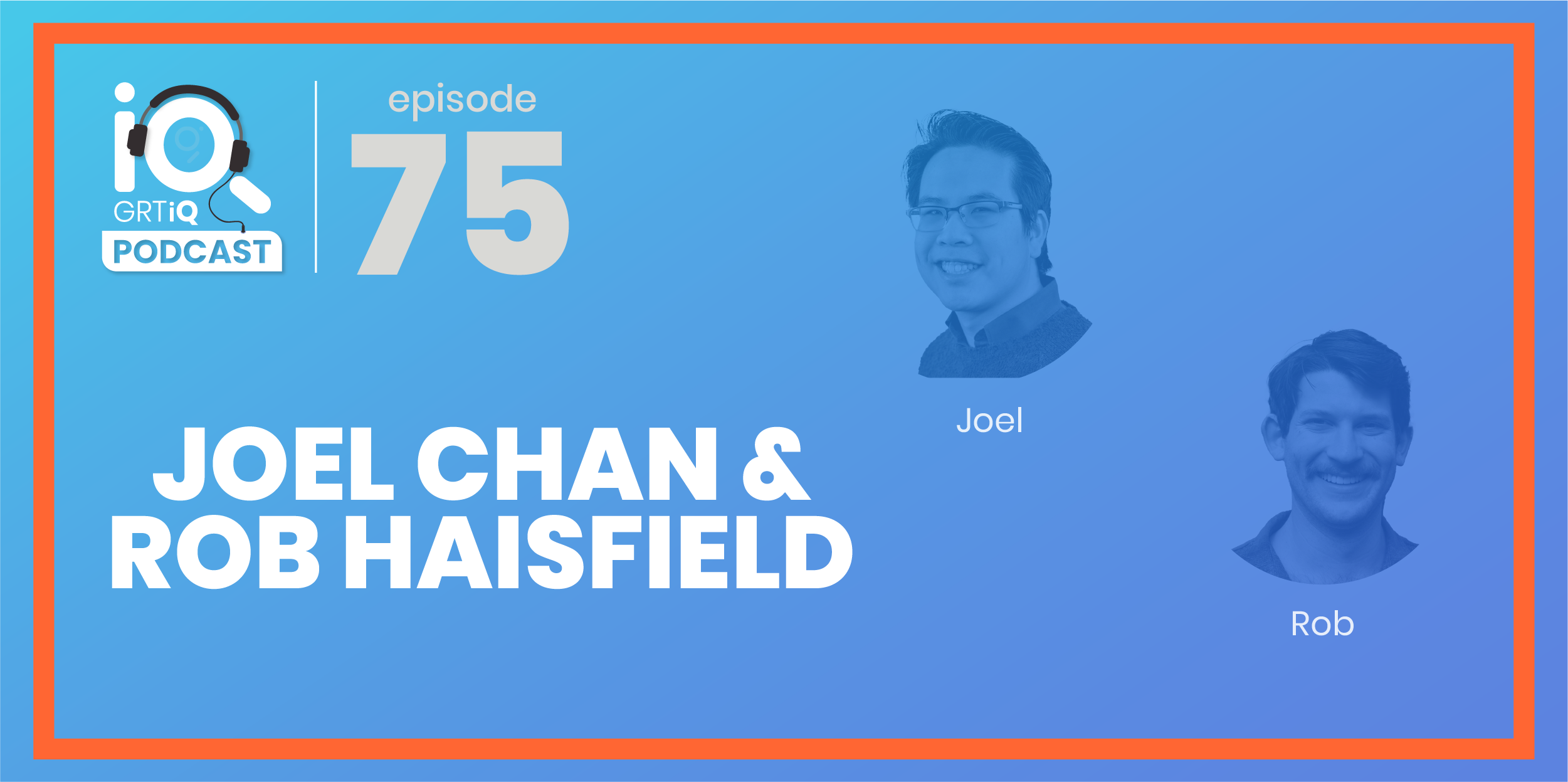
GRTiQ Podcast: 75 Joel Chan and Rob Haisfield
Today I’m speaking with Rod Haisfield and Joel Chen. I recorded this interview with Rob and Joel to shine a light on their research, which was funded by a grant from The Graph Foundation, and to show, once again, how The Graph ecosystem is exploring the edge of technology. As you will hear, in this particular case the edge being explored is at the intersection where technology, user experience, and knowledge converge.
Much of what we discuss during this interview revolves around what’s known as tools for thought. Although this topic is fairly academic, the essence of the concept is the study of how humans learn and synthesize knowledge through the tools they use (for example, note taking). And the discipline also goes one step further to analyze the ways in which the tools we use actually shape our ability to think and synthesize – almost to say that our capacity for thinking and knowledge is bound, in many ways, by the tools we use during the process.
Using the paradigms associated with tools for thought enables technologists creating products with the intent of increasing knowledge and produce synthesis, to ensure the design and features of the product facilitates such an outcome.
The GRTiQ Podcast owns the copyright in and to all content, including transcripts and images, of the GRTiQ Podcast, with all rights reserved, as well our right of publicity. You are free to share and/or reference the information contained herein, including show transcripts (500-word maximum) in any media articles, personal websites, in other non-commercial articles or blog posts, or on a on-commercial personal social media account, so long as you include proper attribution (i.e., “The GRTiQ Podcast”) and link back to the appropriate URL (i.e., GRTiQ.com/podcast[episode]). We do not authorized anyone to copy any portion of the podcast content or to use the GRTiQ or GRTiQ Podcast name, image, or likeness, for any commercial purpose or use, including without limitation inclusion in any books, e-books or audiobooks, book summaries or synopses, or on any commercial websites or social media sites that either offers or promotes your products or services, or anyone else’s products or services. The content of GRTiQ Podcasts are for informational purposes only and do not constitute tax, legal, or investment advice.
SHOW NOTES:
- Joel Chan (Twitter)
- Joel Chan (Website)
- A Dataset of Information-Seeking Questions and Answers Anchored in Research Papers – ACL Anthology (Link). This link is regarding the claim that automated synthesis is still a hard open problem: results in here is that, without human-selected snippets, extractive/abstractive summarization of answers to questions about NLP research papers (e.g., info about methods or results) maxes out at ~30% accuracy, and maxes out at ~60% accuracy if given the human-selected snippets
- Rittel & Webber wicked problems: Dilemmas in a general theory of planning (Link)
- Evidence that large language models get less truthful as they grow (Paper)
- With regards to medieval/renaissance roots of tools for thought: Too Much to Know: Managing Scholarly Information before the Modern Age (Book).
- Rob Haisfield (Twitter)
- Rob Haisfield (Website)
- Rob Haisfield (Research)
- The Graph Discord (Discord)
- The Graph Telegram (Telegram)
- The Graph Reddit (Reddit)
- The Graph Forum (Forum)
- The Graph Foundation (Website)
- The Graph (Website)
- Graph Advocates (Website)
- Graph AdvocatesDAO (Twitter)
- SubgraphDAO (Twitter)
SHOW TRANSCRIPTS
We use software and some light editing to transcribe podcast episodes. Any errors, typos, or other mistakes in the show transcripts are the responsibility of GRTiQ Podcast and not our guest(s). We review and update show notes regularly, and we appreciate suggested edits – email: iQ at GRTiQ dot COM. The GRTiQ Podcast owns the copyright in and to all content, including transcripts and images, of the GRTiQ Podcast, with all rights reserved, as well our right of publicity. You are free to share and/or reference the information contained herein, including show transcripts (500-word maximum) in any media articles, personal websites, in other non-commercial articles or blog posts, or on a on-commercial personal social media account, so long as you include proper attribution (i.e., “The GRTiQ Podcast”) and link back to the appropriate URL (i.e., GRTiQ.com/podcast[episode]).
Not available. Check back soon!
YOUR SUPPORT
Please support this project
by becoming a subscriber!
DISCLOSURE: GRTIQ is not affiliated, associated, authorized, endorsed by, or in any other way connected with The Graph, or any of its subsidiaries or affiliates. This material has been prepared for information purposes only, and it is not intended to provide, and should not be relied upon for, tax, legal, financial, or investment advice. The content for this material is developed from sources believed to be providing accurate information. The Graph token holders should do their own research regarding individual Indexers and the risks, including objectives, charges, and expenses, associated with the purchase of GRT or the delegation of GRT.
©GRTIQ.com